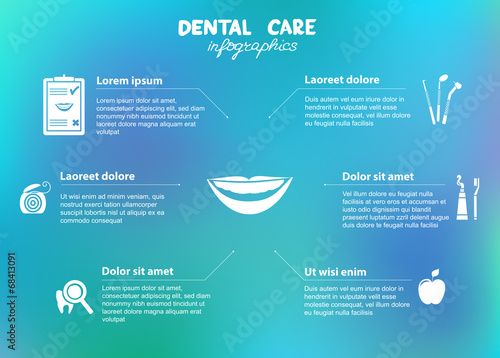Emergency Dental Treatment Versus Regular Dental Care: Understanding The Primary Differences
Emergency Dental Treatment Versus Regular Dental Care: Understanding The Primary Differences
Blog Article
see this site By-Hyldgaard Kelleher
When confronted with an oral emergency, understanding the distinctions between emergency situation dentistry and normal oral treatment is essential. You might ask yourself how to set apart between the two, particularly in regards to scope, action time, and cost. Each sort of dentistry serves an unique purpose, yet the subtleties in their approaches can dramatically influence your dental health and wellness and wallet. Let's unwind these differences and clarified which option might best fit your requirements and circumstances.
Extent of Therapy
Emergency situation dentistry focuses on attending to immediate oral concerns such as serious toothaches or injuries that need prompt interest. When you experience unexpected and intense discomfort, swelling, bleeding, or trauma to your teeth or periodontals, looking for immediate care from an emergency dental practitioner is important. These specialized oral experts are outfitted to manage serious cases that can not wait on a normal consultation.
Whether it's a knocked-out tooth, a broken tooth, or unbearable pain, emergency dental care offers timely alleviation and required therapy to relieve your pain.
In emergency dentistry, the primary objective is to maintain your condition, manage your pain, and stop additional damage to your oral wellness. From carrying out emergency removals to supplying short-lived dental fillings or repair services, the emphasis is on resolving the instant concern at hand. Once the urgent problem is resolved, you may be referred back to your regular dental expert for any follow-up care or extra treatment required to recover your dental health.
Feedback Time
For urgent dental concerns, prompt response time plays a critical role in decreasing pain and protecting against further complications. When dealing with an oral emergency situation, such as severe toothaches, knocked-out teeth, or unexpected swelling, time is of the essence. Seeking immediate treatment from an emergency situation dental professional can make a substantial difference in the result of your situation. Hold-ups in treatment can not only lengthen your discomfort yet also raise the risk of infection or permanent damages to your teeth and gums.
In contrast, regular dentistry visits are typically set up ahead of time for regular exams, cleanings, or non-urgent treatments. While please click the up coming document are essential for maintaining oral wellness, they're typically not indicated to resolve urgent issues that require prompt interest. Regular dental care concentrates on preventive care and long-term therapy preparation as opposed to instant interventions for severe issues.
Consequently, when faced with an abrupt dental trouble that can't wait, it's important to prioritize quick activity and look for aid from an emergency dental professional to resolve the concern immediately and successfully.
Expense and Insurance coverage
Thinking about the financial aspect of oral treatment, understanding the distinctions in cost and insurance coverage in between emergency dentistry and normal dental care is vital. Emergency dentistry commonly includes a greater cost contrasted to normal oral solutions. Since emergency situations typically need immediate focus, the expenses might include after-hours fees or expedited services, which can include in the overall expense.
On the other hand, normal dental care commonly includes organized brows through for preventative care, regular examinations, and typical treatments like cleanings and fillings, which are generally a lot more cost-effective.
When it pertains to insurance policy protection, emergency situation dental solutions might often have limited options accepted by companies, causing possible out-of-pocket expenditures for clients. On the other hand, regular dentistry is normally a lot more lined up with typical insurance coverage strategies, making it much easier for clients to utilize their coverage and decrease personal expenses.
Before looking for oral therapy, it's recommended to contact both your dental practitioner and insurance company to understand the insurance coverage readily available for emergency situation versus normal oral services.
Conclusion
In conclusion, recognizing the key differences between emergency dentistry and normal dentistry can help you make educated choices regarding your dental health and wellness needs.
Emergency dentistry offers immediate relief for urgent dental issues, while normal dentistry concentrates on preventative care and long-lasting therapy planning.
Both choices have their own advantages and costs, so it is necessary to consider your particular circumstance and insurance policy coverage when making a decision which sort of oral care is right for you.
